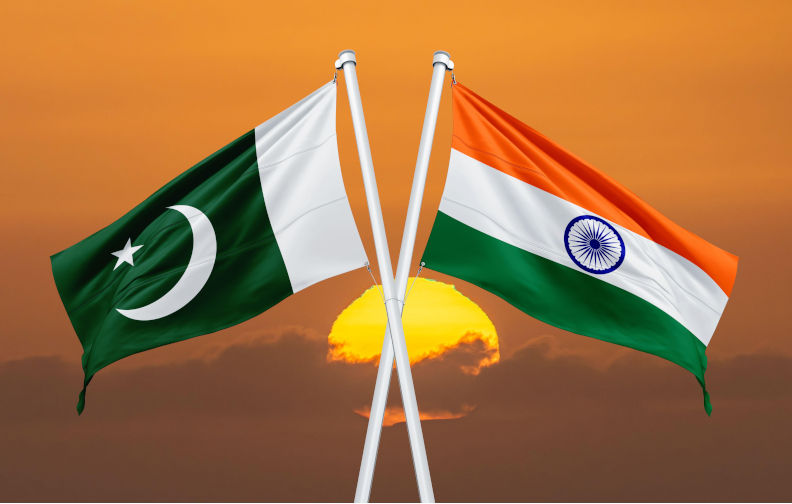US shift towards Pakistan may unsettle India and the South Asia balance
July 5, 2025
Islamabad welcomes the opportunity to hedge against China, but New Delhi may well go looking for other, more reliable partners.
The recent White House lunch date between Pakistan’s army chief, Field Marshal Asim Munir, and US President Donald Trump was a renewal of high-level US-Pakistani engagement that suggested a potential rebalancing of US priorities in South Asia.
The visit, closely watched by stakeholders in South Asia and observers of Washington’s policy in the region, has raised questions about the future of the US-India strategic partnership – particularly as US-China tensions appear to be easing and Trump seems more than eager to strike a deal with China, an “iron brother” of Pakistan.
Yet the significance of the lunch meeting should not be overstated: it signals flexibility, not a complete shift in priorities. It reflects a deal-centric approach that aligns with Trump’s broader foreign policy instincts while introducing risks that could unsettle South Asia’s delicate geopolitical balance.
For one, the meeting — the first time a senior Pakistani official has been hosted in the White House in six years — marks a clear departure from the Biden administration’s approach, which prioritised strengthening ties with India.
Biden’s strategy leaned heavily on India as a counterweight to China, emphasising shared democratic values. In contrast, Trump’s decision to allow Pakistani leadership back into the White House for a visit reflects a return to transactional diplomacy, favouring more immediate economic and strategic interests over ideological alignment.
This approach sends mixed signals to regional partners such as India, which has invested heavily in a US-centric Indo-Pacific strategy in recent years.
Biden, Modi hail new era of US-India ties and tout deals
For Pakistan, the meeting was a diplomatic coup. After years of limited engagement, Islamabad is eager to reassert its relevance in Washington, where it has largely come to be viewed as part of China’s sphere of influence. Proposals on critical minerals and cryptocurrency, aligned with Trump’s business mindset, highlight Pakistan’s calculated approach.
But these initiatives, which position Pakistan as a potential economic partner in a world increasingly focused on resource security and digital innovation, are not without challenges. Pakistan is struggling economically and much of its mineral wealth lies in volatile regions plagued by insurgency.
While renewed US-Pakistan co-operation in counterterrorism and development is possible, it’s worth questioning whether such efforts can deliver meaningful results in a region full of competing interests. China’s role cannot be ignored: its influence in South and Central Asia, cemented through the China-Pakistan Economic Corridor and decades of diplomatic support, is a fixture of its foreign policy, not a variable.
Pakistan’s outreach to the United States doesn’t diminish China’s position. Islamabad isn’t abandoning its deep ties with Beijing; it is hedging its bets, capitalising on Trump’s deal-making instincts to expand its strategic options. This dual-track diplomacy could elevate Pakistan’s geopolitical leverage or leave it caught between two superpowers with conflicting agendas.
India, understandably, is uneasy. Prime Minister Narendra Modi’s phone call with Trump, just before Munir’s visit, emphasised India’s rejection of mediation on the Kashmir issue and reflected New Delhi’s wariness of Pakistan’s re-entry into Washington’s orbit.
India and Pakistan to withdraw troops from contested region, resume border ceremony
Pakistan’s nomination of Trump for the Nobel Peace Prize further complicates the narrative for India, which has refused to even acknowledge Trump’s role in halting its conflict with Pakistan last month.
India’s concerns are heightened by its tough trade talks with the US, with disputes over agricultural goods, automotive parts and steel tariffs delaying progress ahead of the 9 July deadline, after which India faces a US reciprocal tariff of 26%. This contrasts sharply with Pakistan’s fast-moving negotiations. US trade talks are expected to wrap up as soon as this week to avoid the 29% tariff, according to Pakistan’s finance ministry in a statement released after Munir’s visit.
This gap shows India’s challenge in staying central to US policy under an administration focused on quick gains over long-term goals. New Delhi is clearly frustrated, as it risks being pushed aside, despite years of building closer ties with Washington. But Trump’s US foreign policy shows a willingness to engage with adversaries and allies alike when it serves immediate interests.
Pakistan’s ability to play both sides is clever, but could prove unsustainable. Its deep ties to China may limit how far it can align with Washington without compromising its core interests. Meanwhile, India may adapt to a US administration that values deal-making and look to diversify its partnerships.
But this could cause the region to become more divided, with India looking for other partners to deal with an unpredictable US. China remains the most reliable player, its strong position in South Asia having come from years of steady investment and diplomacy with countries such as Sri Lanka, Bangladesh and Nepal.
The real question is whether Trump’s overtures towards Pakistan could force India to scale back its global ambitions and refocus on the shifting power dynamics in its immediate neighbourhood.
Republished from the South China Morning Post, 30 June 2025
The views expressed in this article may or may not reflect those of Pearls and Irritations.
